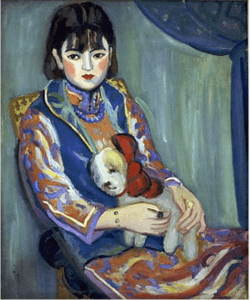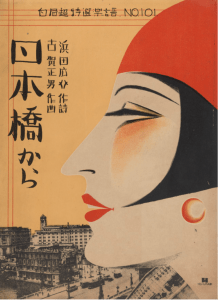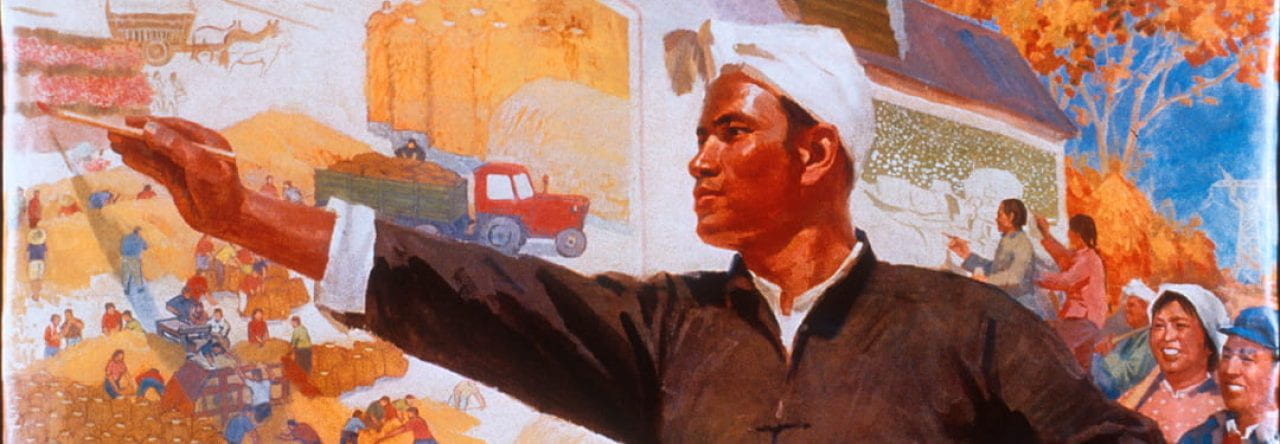
Guan Zilan, Portrait of Miss L., oil on canvas 90 * 75 cm, 1929.

Nihonbashi (Nihonbashi kara 日本橋から), 1930, IMAI Hisamaro.
Portrait of Miss L. is one of the famous paintings of Guan Zilan.
In this painting, A girl is sitting on a chair and holding a cute dog. The girl is wearing the cheongsam which is the typical Chinese style dress during the 20th century in China. The main color of the dress: red, also represents China to some extent. Miss L. is wearing a lot of jewelry on her hands. The dress she is wearing is really dedicated and gorgeous. The colors on the dress are beautiful and the dress has a nice gloss under the lights. This shows that Miss L. is from the upper class. The facial expression of Miss L. is very peaceful and steady. Her eyes are looking outside of the painting.
Portrait of Miss L. is one of the famous paintings of Guan Zilan. The colors used in the painting are very bright, vivid, bold, and with high contrast. The red lips and cheeks contrast sharply with the white face, as well as the red dress and blue coat. This is a typical characteristic of the Fauvism style which is “the style of les Fauves (French for “the wild beasts”).” The fauvism style emphasized “painterly qualities and strong color over the representational or realistic values retained by Impressionism.” In the 1920s, under the May Fourth Movement, people in China realized the importance of science and realism and were trying hard to learn from western. Guan Zilan went to Japan to study art which was influenced a lot by western modern art (the painting painted by Nihonbashi is a comparison). Unlike the traditional Chinese painting where there are a lot of landscapes, trees, and Chinese architecture, this painting only has a small part of the curtain as the background. Also, this painting is very realistic and detailed, unlike the abstract style of traditional Chinese painting. This shows that modern China was absorbing and learning western culture and techniques a great deal. At the same time, artists were actively trying to combine and involve the Chinese elements with western style, in this example, the red cheongsam. Other than that, the girl in the painting looking outside of the painting seems like she is thinking and planning something carefully. This might represent the intent of the artist of thinking about how to build a better China.
Reference:
“Artworks By Style: Fauvism – Wikiart.Org”. 2022. Www.Wikiart.Org. https://www.wikiart.org/en/paintings-by-style/fauvism#!#filterName:all-works,viewType:masonry.
Crothers, W., 2020. Japanese modernism: between earthquake and war. [online] www.ngv.vic.gov.au. Available at: <https://www.ngv.vic.gov.au/essay/japanese-modernism-between-earthquake-and-war/> [Accessed 20 April 2022].


Camilo Mosquera Ferry
I like the incorporation of traditional themes that encompass Chinese art. its also clear the form incorporates many outside influences, I think this is a beautiful piece